Geysers are springs that are characterized by the sporadic release of water. These explosions are generally accompanied by steam. Geysers may be Nature’s miraculous creations, or be a result of man’s interference with the earth and the environment. Geysers may be hot or cold, and of different heights. Let us take a look at the 10 Extraordinary Geysers in the World.
10. Great Geysir – Iceland
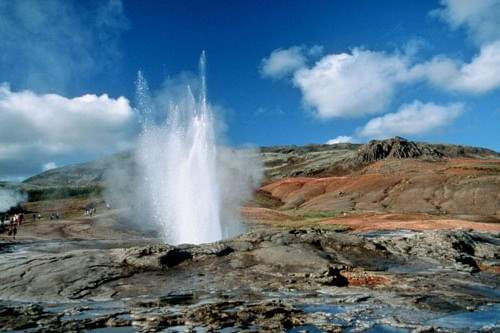
The Great Geysir, located in the Haukadalur Valley in west-central Iceland, is one of the most amazing geysers in the world, and is the first of its kind to be described in print, with the earliest report being from the 18th century. In fact, the term, ‘geyser’ has been derived from its name. It is estimated to be active for about 10,000 years. It hurls water up to 70m during infrequent eruptions.
9. Old Faithful geyser – Yellowstone National Park, USA
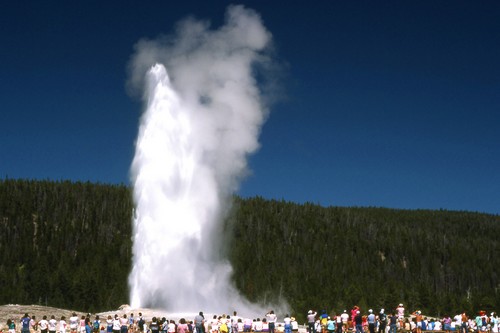
The Old Faithful geyser is one of the thousands of geysers found in the Yellowstone National Park, U.S. It was the first geyser in the park to be named, which happened back in 1870. It erupts approximately at an interval of 63 minutes, and is thus one of the most predictable geographical features on earth, though the interval may increase on the basis of the duration of every eruption.
8. Velikan Geyser – Russia
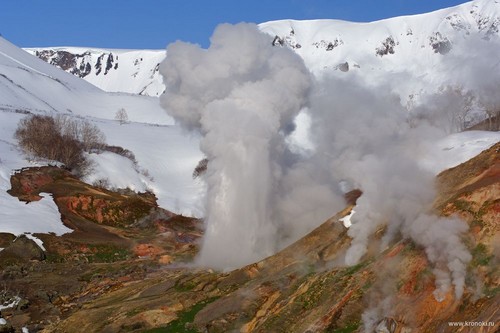
The Velikan Geyser is a is located in Russia, in the Dolina Geiserov or Valley of Geysers of Kamchatka Peninsula, a region noted for its high concentration of geysers in the world. The Velikan, meaning ‘giant’, is one of the largest of the 30 named geysers in the field. It erupts regularly at an interval of about 6-8 hours every day, though for only about a minute, spewing water over 25m into the air.
7. Castle Geyser – Yellowstone National Park, USA
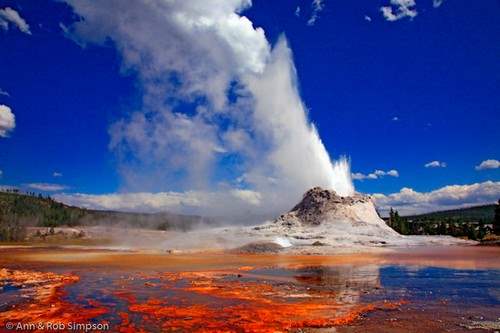
The Castle Geyser is in the upper Geyser Basin of Wyoming’s Yellowstone National Park, USA, the site which has over 10,000 hot springs and geysers. It is a cone-shaped geyser with particularly large geyserite deposits, which gives it a distinctive look. In fact, the large keep, turrets and crenellated edges contributed to its naming. Recent studies indicate that it first erupted about 1000 years ago.
6. Suwako Geyser – Japan
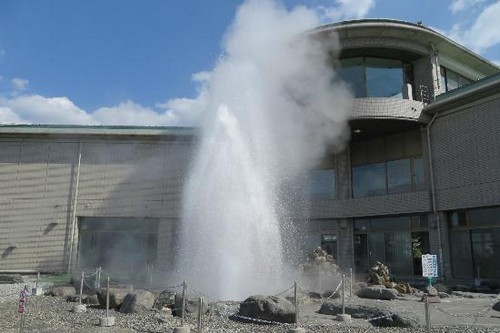
The Suwako Geyser Center facing the Suwako Lake in the Nagano prefecture in Japan, features one of the biggest geysers in the world, along with Nanatsu-gama, or seven hot springs. The view offered by this geyser is considered as one of the world’s most dynamic sights, is noted for sprouting water which goes up to a height of 40-50m. These eruptions happen at approximate hourly intervals.
5. La Bufadora Geyser – Mexico
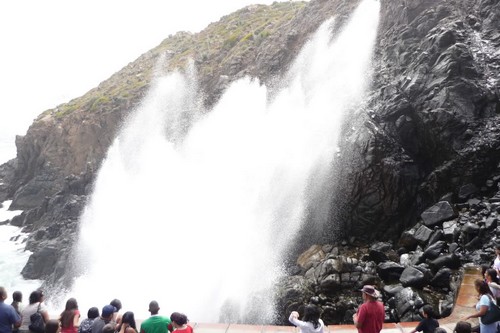
The La Bufadora is a marine geyser in Baja California of Mexico, and is one of North America’s largest blowholes. It is a sprout through which sea water is forced out by air trapped in a sea cave, resulting in explosions every minute or so, usually with a thunderous sound. From the 24m exhibit hall roof top, one can view the geyser shoot up to more than 30m, and sometimes even experience its spray.
4. El Tatio Geyser – Chile
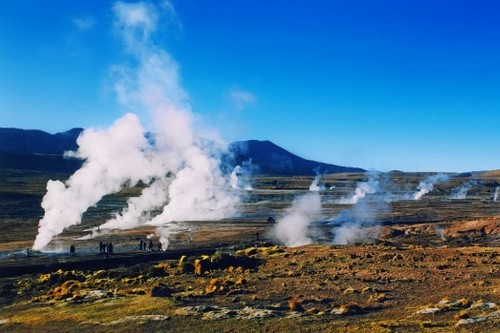
El Tatio in northern Chile is a geyser field within the Andes Mountains, at a height of 4320m, and is one of the highest-elevated geyser fields in the world. With more than 80 active geysers, it is also the world’s third largest field of geysers, and southern hemisphere’s largest. Though each geyser’s spurt goes up only a few feet, the steam goes much higher, and their overall effect is mind-blowing.
3. Strokkur Geyser – Iceland

The Strokkur Geyser a fountain geyser located in the geothermal area of southwest Iceland, beside the Hvítá River. It is one of the most famous geysers of Iceland, because of its great height that goes up to 15-20m, and sometimes even as high as 40m. The geyser erupts almost every 4-8 minutes. A 1789 earthquake unblocked its conduits. In 1963, its conduit, which got blocked, was cleaned again.
2. Geysir Andernach – Germany
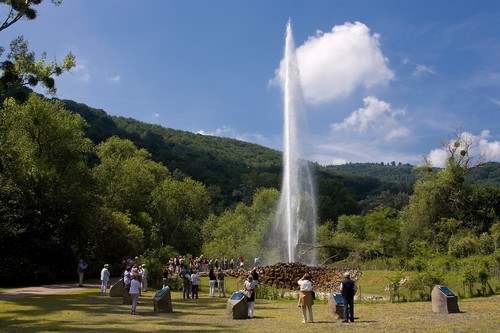
The Geysir Andernach, located in the Nature Reserve of “Namedyer Werth” in Andernach, Germany, one of the most unique geysers in the world, and for several valid reasons. For one, its formation was not a natural phenomenon, being drilled in 1903. Besides, it is a cold water geyser, and the highest one, at that, being of 64m. The water is also forced out by carbon dioxide, like a soda bottle.
1. Fly Geyser – Nevada, USA
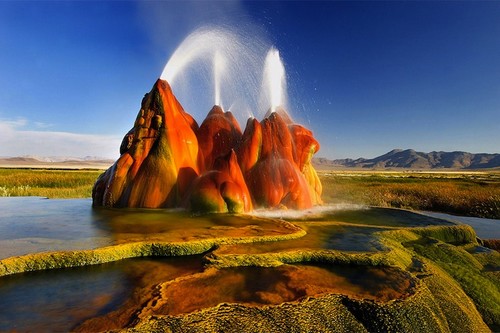
The Fly Geyser is a small but stunning geothermal cone-shaped geyser on the private Fly Ranch in Nevada, U.S. It was formed when a faulty well drilling in 1964 went wrong and resulted in dissolving minerals that rise and accumulated. A travertine mound was thus created, on which this growing geyser sits, releasing water to about 1.5m in the air. The thermophilic algae give it dazzling colours.
There are several over great geysers in the world. Among them is the Lady Knox Geyser in the Waiotapu area of the New Zealand’s Taupo Volcanic Zone, which is induced to cause eruptions of about an hour and reach up to a height of 20m, every day at 10.15am by dropping surfactant into the opening to break the surface tension of cold water. Another geyser that deserves mention is the Waimangu Geyser of the Taupo Volcanic Zone in New Zealand, which was the biggest geyser in the area and the highest in the world, blasting water up to a height of 450m, but was active only between 1900 and 1904.



0 comments:
Post a Comment